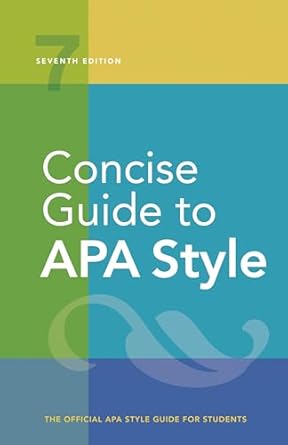[toc]
scholarly writing audience tone and jargon
Concise Guide to APA Style: 7th Edition (OFFICIAL)
Page 63 Review
The Nuances of Scholarly Writing: A Critical Analysis
In the realm of academic discourse, precision, clarity, and accessibility are paramount.
The excerpt from “Effective Scholarly Writing” sheds light on critical aspects often overlooked: audience consideration, the judicious use of contractions and colloquialisms, and the careful navigation of jargon.
This commentary delves into these elements, highlighting their significance in crafting impactful scholarly work.
Understanding Your Audience
The excerpt begins by emphasizing the importance of understanding your audience, specifically suggesting that writers should consider someone “who is trying to keep abreast of the literature but is not familiar with the jargon or insider perspectives of your field.” This is a crucial consideration.
As the excerpt notes:
“What would help this reader understand your work and appreciate its importance?”
This question encapsulates the essence of effective communication.
Scholarly writing should not exist in a vacuum; it should be accessible to a broader audience beyond immediate experts.
The ability to translate complex ideas into understandable terms demonstrates a mastery of the subject matter and enhances the impact of the research.
Contractions and Colloquialisms: Maintaining a Professional Tone
The excerpt then addresses the use of contractions and colloquialisms.
The text states: “Avoid using contractions and colloquialisms, which detract from a professional tone in scholarly writing.” It further elaborates:
“Contractions—shortened forms of one or two words in which an apostrophe is used in place of missing letters—generally do not appear in scholarly writing because they convey an informal tone.”
The guidance against contractions aligns with the formal tone expected in academic writing.
While seemingly minor, the avoidance of contractions like “can’t” in favor of “cannot” contributes to the overall sense of professionalism and objectivity.
It’s not about being pedantic; it’s about signaling a commitment to rigor and precision.
However, the excerpt rightly points out the exceptions: direct quotations, linguistic examples, or common idioms.
The excerpt provides good guidance, for example:
“However, contractions can be appropriately used in some circumstances, such as in reproducing a direct quotation that contains a contraction (e.g., when quoting a research participant, do not change a participant’s use of “let’s go” to “let us go”), referring to a contraction as a linguistic example (e.g., when discussing confusion of “who’s” with “whose’), or referring to an idiom or common saying that contains a contraction (e.g., “you can’t take it with you’).”
Similarly, the avoidance of colloquialisms, described as “informal expressions used in everyday speech and writing,” reinforces the formal register required for scholarly communication.
The excerpt provides examples like “to write up” instead of “to report” and “gonna” instead of “going to.” It also correctly identifies the ambiguity that colloquialisms can introduce:
“These expressions often diffuse meaning, as in the case of approximations of quantity; ‘quite a large part,’ ‘practically all,’ and ‘very few’ are interpreted differently by different readers or in different contexts.
Approximations weaken statements, especially those describing empirical observations.
Instead, use precise, scholarly language.”
Using precise language is critical to maintain a professional tone.
Navigating Jargon: Clarity Over Obscurity
The final point addresses the use of jargon, which is defined as “specialized terminology that is unfamiliar to those outside a specific group.” The excerpt wisely cautions against overuse of jargon:
“Overuse of jargon, even in papers in which that vocabulary is relevant, hinders comprehension.”
While specialized language is often necessary to convey specific concepts within a field, its excessive use can create barriers to understanding.
The excerpt also warns against the euphemistic use of jargon, such as substituting “period of economic adjustment” for “recession.” This practice can obfuscate meaning and potentially mislead readers.
The text also notes that:
“Bureaucratic jargon has had the greatest publicity, but academic or scientific jargon may also grate on readers, encumber communication, and waste space.
Use language that allows readers to understand your writing even if they are not.”
Striving for clarity should always be the goal, even if it means sacrificing some degree of technical precision.
Explaining complex concepts in simpler terms demonstrates a deeper understanding of the subject matter.
Conclusion
In conclusion, the excerpt from “Effective Scholarly Writing” provides valuable insights into the art of crafting impactful academic work.
By understanding the audience, avoiding unnecessary contractions and colloquialisms, and carefully navigating the use of jargon, scholars can enhance the clarity, accessibility, and ultimately, the impact of their writing.
The principles outlined in this excerpt are not mere stylistic suggestions; they are fundamental to effective scholarly communication.
Buy full ebook for only $18: https://www.lulu.com/shop/american-psychological-association/concise-guide-to-apa-style-7th-edition-official/ebook/product-rmzpq54.html?page=1&pageSize=4

